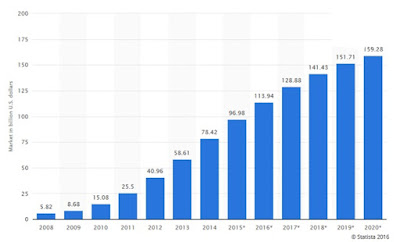Twitter Feed
Cloud computing: A data-centric business model
According to the National Institute of Standards and Technology: “Cloud computing is a model for enabling ubiquitous, convenient, on-demand network access to a shared pool of configurable computing resources (e.g., networks, servers,…
John Mayer At Dell World 2015!! (Oh, I’ll be there too.)
An artist who defies all boundaries, John Mayer has won seven Grammy Awards and sold more than 17 million albums worldwide. The singer, songwriter and guitarist’s skills have been widely…
Data-centric Security: The New Must Have
Where is your data right now? The explosion of cloud computing and consumer IT means that your data, as well as data about you, can be virtually anywhere.Having your data and the…
Personal email:Pathway to Cybersecurity Breaches
As a business communications tool, email is the dominant option, and many corporations have policies that allow the use of personal email on corporate computers. In a recent Adobe Systems…
IEEE Cloud Computing: Legal Clouds
The new issue of IEEE Cloud Computing is now available! This special issue looks at how to balance privacy with legitimate surveillance and lawful data access. Some of the…
Cloud hosting: Look beyond cost savings and weigh pros, cons
Is your company struggling with the idea of using “cloud hosting” in order to save money? Truth be known, using cost savings as the primary reason for moving to cloud…
“Cloud First” Lessons Learned from ViON
In 2011, then United States CIO Vivek Kundra released the US Federal Cloud Computing Strategy [1]. In the executive summary he pointed to cloud computing as a key component of…
Looking for Security Peak Performance?
You can find it at Dell Peak Performance 2015!!! I’ll be there at the Aria Resort and Casino in Las Vegas attending as a social media correspondent with a full…
The Cybersecurity Sprint: Are we safe yet?
UPDATE: NBC News reports U.S. officials have disclosed a hack of the Pentagon’s Joint Staff unclassified email system, which took place on July 25. Recent unauthorized access to a U.S. government database…
Cloud Computing + Things = “Information Excellence”, Not IoT
The Internet of Things (IoT) has quickly become the next “be all to end all” in information technology. Touted as how cloud computing will connect everyday things together, it is…
- Enable cloud service arbitrage based on cost, performance or operational need;
- Help companies migrate operations to the cloud and assist with staff augmentation and training;
- Provide cloud service auditing and SLA monitoring services;
- Help in focusing and managing organizational cloud service demand;
- Provided toolsets to assist in the migration and integration of enterprise applications; and
- Help in change management and the selection and integration of other managed services.
By automating and operationalizing the governance of cloud services, CSBs can efficiently multi-source services and augment them with third party metering and monitoring. Using CSBs, organizations also accelerate their transition to hybrid IT models. This marketplace is typically segmented type of services: cloud brokerage and cloud brokerage enablement, wherein cloud brokerage enablement is further segmented into internal and external brokers. When used internally, cloud enablement platforms helps enterprises adopt the new hybrid IT and multi-sourced operating model. By building organic expertise, companies can personalize IT service consumption and unify
IT service delivery through the use of a corporate self-service store, a dynamic service marketplace, and continuous delivery. This centralized, supply chain approach unifies the order, execution, and management of multi-sourced solutions across legacy and cloud resources, by centrally delegating and tracking execution.
(This post was brought to you by IBM Global Technology Services. For more content like this, visit Point B and Beyond.)
( Thank you. If you enjoyed this article, get free updates by email or RSS – © Copyright Kevin L. Jackson 2016)
Cloud Computing
- CPUcoin Expands CPU/GPU Power Sharing with Cudo Ventures Enterprise Network Partnership
- CPUcoin Expands CPU/GPU Power Sharing with Cudo Ventures Enterprise Network Partnership
- Route1 Announces Q2 2019 Financial Results
- CPUcoin Expands CPU/GPU Power Sharing with Cudo Ventures Enterprise Network Partnership
- ChannelAdvisor to Present at the D.A. Davidson 18th Annual Technology Conference
Cybersecurity
- Route1 Announces Q2 2019 Financial Results
- FIRST US BANCSHARES, INC. DECLARES CASH DIVIDEND
- Business Continuity Management Planning Solution Market is Expected to Grow ~ US$ 1.6 Bn by the end of 2029 - PMR
- Atos delivers Quantum-Learning-as-a-Service to Xofia to enable artificial intelligence solutions
- New Ares IoT Botnet discovered on Android OS based Set-Top Boxes



